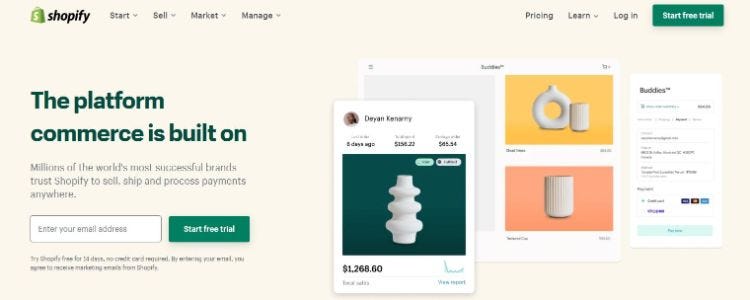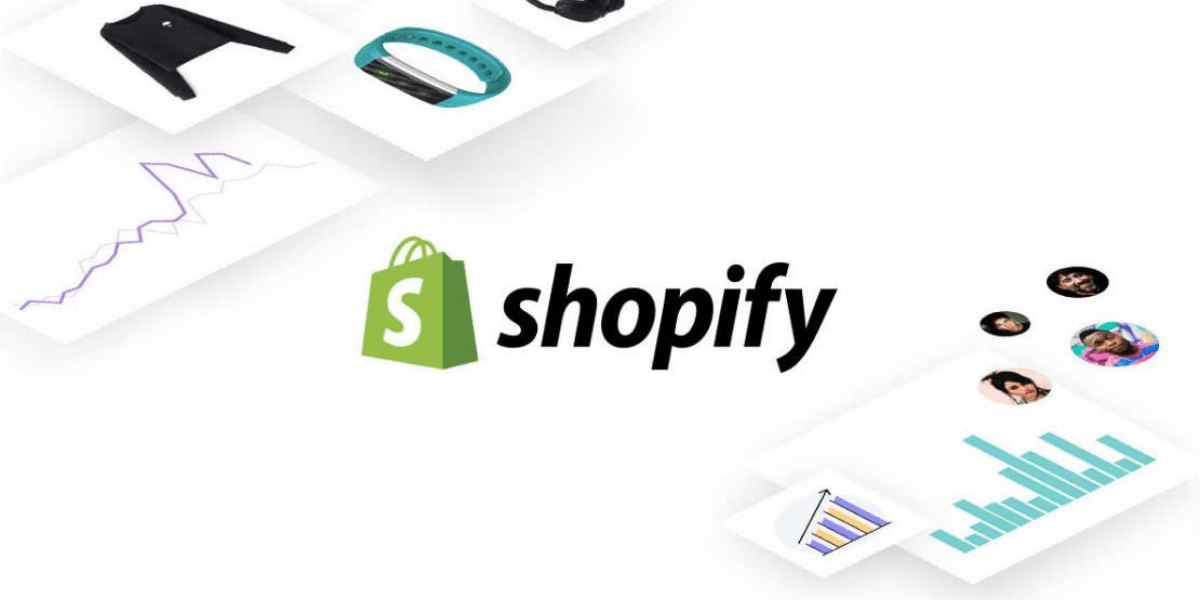In recent years, ecommerce has become an increasingly popular and profitable industry. With the rise of technology and the convenience of online shopping, more and more people are turning to ecommerce businesses for their shopping needs. Starting an ecommerce business may seem overwhelming, but with the right steps and strategies, it can be a rewarding and successful venture.
In this article, we will outline 9 essential steps to help you start your own ecommerce business. From finding your niche and selecting a platform to creating a marketing plan and managing your finances, we will provide you with a comprehensive guide to launching and running a successful ecommerce business.
Whether you are an experienced entrepreneur or a newcomer to the world of ecommerce, this guide will provide you with valuable insights and practical advice to help you get your business off the ground. By following these steps, you will be well on your way to creating a profitable and sustainable ecommerce business.
So, let’s get started!
Table of Contents
Step 1: Brainstorm & validate your idea
It’s easy to get excited about a new business idea, but it’s vital to take the time to test that idea, doing what you can validate your product and market hypotheses.
Before you do that, of course, you’ll need ideas. A good place to start is to examine current trends. Here are some sites that might be helpful:
- Google Trends — This site tracks and analyzes top search terms for a specific period. You enter a search term and specify your location, period, category, and type of search, and it will tell you relevant trending searches.
- Amazon and eBay — You can use the suggestions that come up when you type a search term into these marketplaces to find the top searches related to that term.
- Social media — Find out what people are talking about on social networks relevant to your target industry. Check out hashtags or use social listening tools to gather insights.
Once you have two or three ideas that seem promising, see if they stand up to closer scrutiny. Here are some elements to investigate:
- Market demand — You can use Google Trends to see if there is demand and predict if it is likely to continue.
- Target market — Explore your potential customer base, the segment of the population likely to buy your product or service.
- Competition — An easy way to quickly identify competitors is to do a few relevant Google searches for products in your idea category.
When you’re ready, here are two concrete steps you can take to test your product and market hypotheses:
- Talk to users — Figure out who your target customer is and then speak to them. There’s an art to encouraging authentic feedback that you can use to better your business.
- See what already sells — Competition isn’t always bad. Often, if there are 100 people selling something, the market can support one more. In fact, competition can be a good sign, because it suggests demand. Observe what’s working, and explore how you might tweak it to access new customers or untapped markets.
After all, this, if you still believe your idea is worthwhile, then we can move on to step two.
Step 2: Consider starting with a niche
E-commerce stores are highly scalable, but you shouldn’t spread yourself too thin. It’s often more manageable to start by choosing a niche in your desired space and doing market research around this.
One way to choose a niche is to find out what already has some traction. Look for successful companies in the space and find out what’s working for them. Remember that competition suggests demand, but try to avoid niches already dominated by big players.
That said, you might be able to find gaps even in an over-saturated niche. You’d be surprised at what even major brands sometimes miss.
Step 3: Evaluate products & how to source them
Start by identifying a few products and finding out where to get them. The suppliers you need will depend on the type of products you intend to sell. For example, if you are selling finished goods, you need two or three reliable suppliers for those products. If you make your own products, you need suppliers for your raw materials.
Suppliers can be either domestic or overseas. Many businesses prefer domestic suppliers because the logistics are simpler. However, you might consider overseas suppliers if they are considerably cheaper — or, of course, if the products or materials are not available domestically.
Step 4: Create personas of your ideal customers
When it comes to selling your products or services, understanding your consumer is vital.
A great way to gain that understanding is by creating buyer personas. These are made with a composite of the characteristics of your ideal customer. Personas typically require demographics, financial information, and insights into their needs, motivations, and pain points.
Effective buyer personas can help you develop products based on their needs. Later, they can also help you create content, marketing campaigns, and sales strategies tailored to your ideal customers.
Depending on your current offerings or goals, you might need more than one buyer persona. Sometimes, you may need to conduct interviews within your target market to identify and segment these personas.
Step 5: Check out the competition
Competitive analysis is about identifying and learning about your competitors. It can give you a better understanding of the market and industry trends. It can also help you spot your own company’s strengths and weaknesses and set benchmarks for growth.
Consider conducting a strengths, weaknesses, opportunities, and threats analysis of your business and of your competitors. (Don’t worry; it’s simpler than it sounds.) The meaning behind every component is as follows:
- Strengths — what the company does well that sets it apart from others
- Weaknesses — areas that need improvement
- Opportunities — external factors that could give a competitive advantage
- Threats — factors that can potentially put a company at risk
You can plot these components as quadrants in a table to easily visualize your areas of opportunity and focus.
Step 6: Develop your business plan
At this point, it’s time to develop a business plan. This will serve as a road map showing your company’s goals and how you plan to reach them. It can also be turned into a pitch deck to show potential investors and an onboarding deck for future team members. Your business plan should include the following:
- Business name and description
- Products and services you’re selling
- Sales and revenue model
- Staff and employees
- Funding sources
- Details about the business model
It should not take more than a couple of days to create your business plan. You can use any of the free templates available online, such as this one from MakeMoneyForSure.com. What’s essential is to craft goals that are SMART (Specific, Measurable, Achievable, Relevant, and Time-Bound).
Express your goals clearly, consistently, and concisely. Your business plan should feel complete and contain all relevant information, but probably shouldn’t be more than 20 pages long.
Step 7: Register your e-commerce business
How you do this step depends on the legal structure you choose. Many online stores start as sole proprietorships or general partnerships. Taxes and liabilities will be legally associated with you as the owner. However, you must file a “doing business as” application to register the business name.
You may also choose to form a limited liability company (LLC), or corporation. The process and requirements will depend on state regulations for your chosen industry.
Generally, you will need an Employer Identification Number (EIN) for tax purposes, a registered agent, and a bank account. You may also be required to get various permits and licenses. Consult a company formation lawyer for advice.
You’ll also need to register your domain name. This will be the name of your online store and ideally, will be the same as (or similar to) your brand name. You can use any domain registrar (such as GoDaddy or Namecheap) to see if the domain name you want is available. If it is, you can buy it for a small annual fee.
Step 8: Build your online store
You’ve validated your product ideas, registered your company, and written a business plan — now it’s finally time to build your website. Most online retailers and wholesalers choose sales as a service (SaaS) platforms because they’re simple to use and offer website-building tools and ecommerce platforms.
Quite a few SaaS providers exist — and some are better than others. Before choosing one, start with a free trial to test out its features.
Remember to look for the following features when deciding on your ecommerce platform:
- Domain name hosting.
- Exccellent speed and uptime.
- A great in-product website builder.
- Free, user-friendly themes.
- Responsive website design.
- An extensive app store full of reliable plugins.
- Full PCI compliance.
- Built-in SEO tools and fully customizable URLs.
- Promotions, discounts, analytics, and other ecommerce marketing features.
- Customer support via phone, email, and live chat.
- An unlimited product catalog.
- Zero transaction fees and low credit card processing fees.
Shopify

Arguably the best SaaS platform out there. Shopify is an ecommerce giant. Overall, they work best for dropshipping stores because integrations and store setup is fast and easy. A longtime name in ecommerce, Shopify launched in 2004 and became a prominent SaaS provider pretty quickly. Platform perks include abandoned cart recovery, free website SSL, marketing tools, and decent customer service.
Shopify does have a few drawbacks. For starters, you’re limited to 100 product variants, so if you have a large catalog with multiple product options (size, material, color, etc.), Shopify might not be right for you.
SEO is also a slight shortcoming. You can’t create your own custom URL structure and are forced to use the Shopify format.
Overall, they’re a great, easy to use e-commerce website tool. Get started with a free trial of Shopify now.
Step 9: Start marketing your E-commerce business
Launching an ecommerce site is easy. The challenge comes when you need to drive traffic to it. We’ll cover both paid and free digital marketing tactics to boost your website traffic — and sales.
Organic Marketing Channels
Organic marketing channels take time to build traction, but they create the strongest long-term return on investment (ROI). A few of the best tactics include:
- Search engine optimization (SEO): Relevant keywords included in page text, product descriptions, and other website content boost search engine rankings.
- Content marketing: This includes starting a blog on your site, and optimizing blog posts, and articles, to drive targeted traffic to your site.
- Social media pages: Active Facebook, Instagram, and Twitter pages encourage new website visits.
- Link building (off-page SEO): It is very hard to get Google traffic without a lot of high-quality, relevant links to your website. These link-building strategies include guest blogging and forming link partnerships with other sites in your niche.
- Email marketing: Email is a huge marketing channel for ecommerce businesses. You should choose an email marketing service that lets you create email popups, send abandoned cart emails, create welcome email series (that include discounts), and send targeted, image-rich marketing emails for holiday promotions.
Paid Marketing Channels
Paid marketing channels produce quick results and make it easier to create a profitable online store, so they’re a popular choice for start-ups as well as large-budget businesses. While they provide quick online marketing wins, they typically have a lower ROI than free tactics (excluding affiliate marketing, which has a strong ROI).
The most effective marketing strategies use a combination of different channels to capture consumers and generate conversions.
If I were to start an ecommerce business from scratch today, I would first create a strong SEO strategy. This includes conducting keyword research around terms that have high search volume and could bring in your target audience.
For example, if you sell resistance bands, you could write a blog post on “The Top 10 Resistance Bands for Women” and link to your product pages within the content.
Next, you’d want to develop a strong link-building strategy and partner with other blogs in your niche to get backlinks. This will increase your website’s Domain Authority (DA) and make it easier to rank all of your pages on search engines.
Finally, I’d use paid advertising carefully, starting with retargeting ads on Facebook. Then I’d move to PPC ads on Google only if you can generate a strong ROI.
The bottom line
starting an ecommerce business can be a challenging yet rewarding venture. By following the nine steps outlined in this guide, you can set yourself up for success in the competitive world of ecommerce.
It all starts with finding a profitable niche and conducting market research to understand your target audience. From there, you can create a business plan, choose a business structure, and register your business. Then, it’s time to build your ecommerce website, optimize it for search engines, and set up your payment and shipping methods. Finally, you can start marketing your business and building your customer base.
Remember that success doesn’t happen overnight. Building a successful ecommerce business takes time, effort, and patience. But by following these steps and staying focused on your goals, you can create a thriving ecommerce business that meets the needs of your customers and helps you achieve your entrepreneurial dreams.







